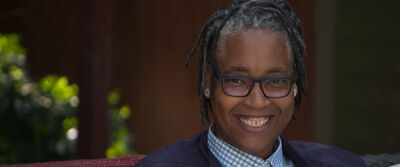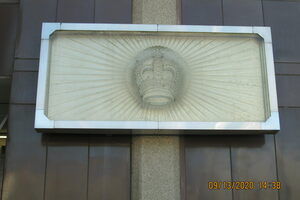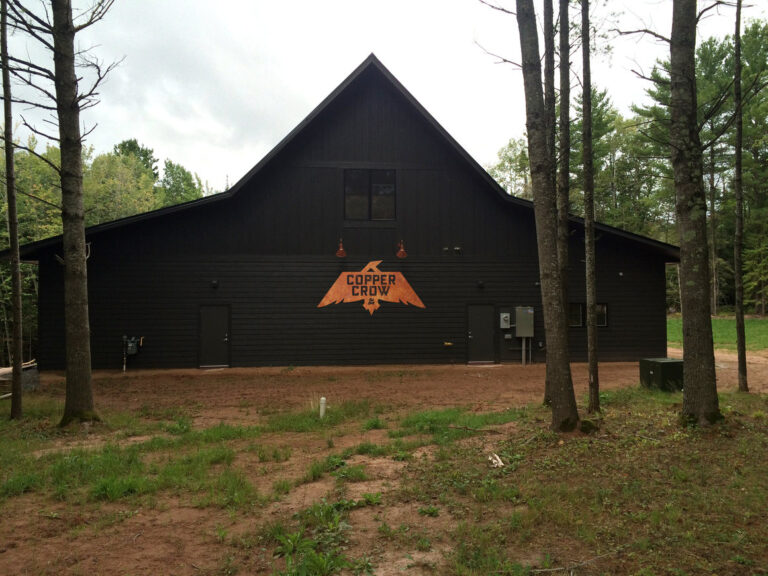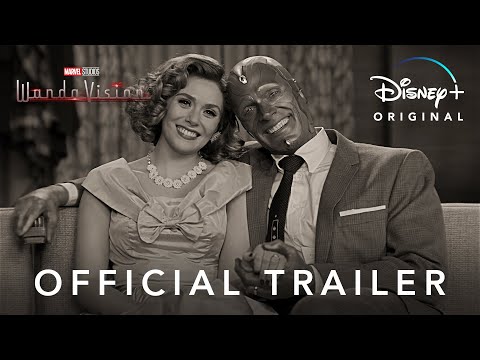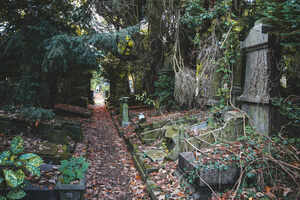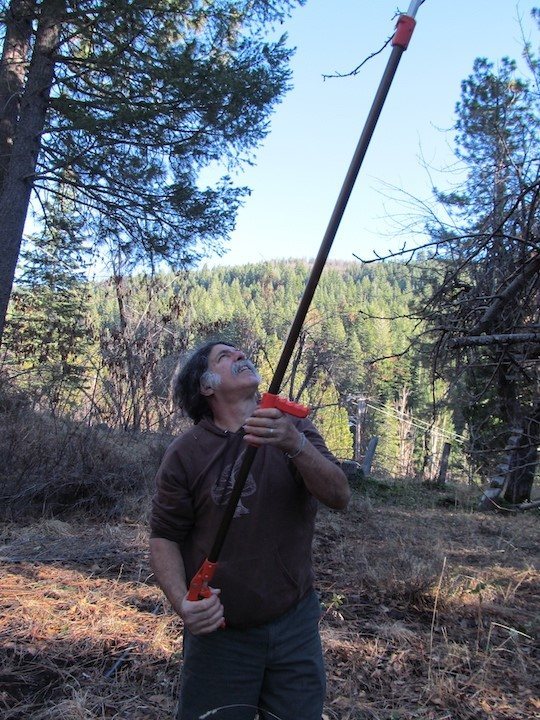22 Things We Learned from the ‘Jason and the Argonauts’ Commentary
Welcome to Commentary Commentary, where we sit and listen to filmmakers talk about their work, then share the most interesting parts. In this edition, Rob Hunter lends his ear to a pair of filmmakers sharing their love and knowledge of Ray Harryhausen’s Jason and the Argonauts.
The films of Ray Harryhausen have been an inspiration for generations of filmmakers over the years, and it turns out that one little boy who became enamored with the movie magic was a young Peter Jackson (Forgotten Silver, 1995). He’s worked over the years to help restore films and footage from the stop-motion master, and he even recorded a commentary track for one of Harryhausen’s classics. The track is from the early 2000s, but its arrival as part of a fantastic Harryhausen box set from Viavision — seriously, it’s a slick die-cut hard case holding the release and its seven discs within — collecting seven of the master’s films means this was my first listen.
So keep reading to see what I heard on Peter Jackson’s commentary track for Jason and the Argonauts!
Jason and the Argonauts (1963)
Commentators: Peter Jackson (filmmaker and fan), Randall William Cook (visual effects artist)
1. This was the 7th collaboration between Ray Harryhausen and producer Charles H. Schneer which included The 7th Voyage of Sinbad (1958), 20 Million Miles to Earth (1957), and others.
2. While Harryhausen is best known for his effects work, he actually conceived of this film and helped shape many of its creative choices beyond the stop-motion animation.
3. The film was briefly titled Jason and the Golden Fleece — artwork and title screens were already crafted and ready to go — but Jackson says an Italian film starring Steve Reeves beat it to theaters with that title so they had to change it. I don’t see such an entry in Reeves’ filmography, but his 1958 film Hercules does see his title character join forces with Jason in search of the Golden Fleece.
4. “It did get lost in a little mini flood of similar-themed films,” says Jackson regarding this movie’s minor blip at the box-office.
5. The Harryhausen/Schneer collaborations were all “director for hire” gigs, as the films were worked out top to bottom by the pair before handing over directing duties to someone capable of following their instructions. They were basically the Marvel of their day.
6. Honor Blackman plays the god Hera, and just one year later she’d be starring as Pussy Galore in Goldfinger (1964).
7. One of the many things Jackson appreciates about the film is how it and Harryhausen brought mythology to life via stop-motion special effects. “Stop-motion had traditionally been developed for monsters, and for dinosaurs really,” but the filmmakers thought beyond that to bring other beings to life.
8. “The best that any parent can do is be 100% supportive,” says only child Jackson. “Don’t cast any judgment on what your kid wants to do, just get in there and support them.” This has nothing to do with the movie, necessarily, but it’s a great sentiment and worth repeating.
9. Harryhausen sketched out the first inkling of this film on the back of his Mysterious Island (1961) script. It was initially titled Sinbad and the Age of Muses and had Jason and Sinbad teaming up for the adventure.
10. The pair start discussing “the traveling matte” when a tiny Jason is put on the table of the gods at 17:40. Jason is in the foreground of the shot while the gods and such take up the bulk of the screen. They’re not used any more thanks to computer advancements, but it involved shooting an actor in front of a yellow sodium screen. “They used a beam-splitter… that allowed you to photograph a matte instantaneously that didn’t have any image degradation through generation loss.”
11. The film’s stunt director cameos at 20:18 as one of the Olympiad contestants. The archer at 20:33 is Andrew Faulds who later went on to become a member of Parliament.
12. They scouted Greece and Yugoslavia for filming locations, but the former was too “bleak and gray” and the latter was too corrupt. They ended up filming in Italy roughly an hour outside of Palermo.
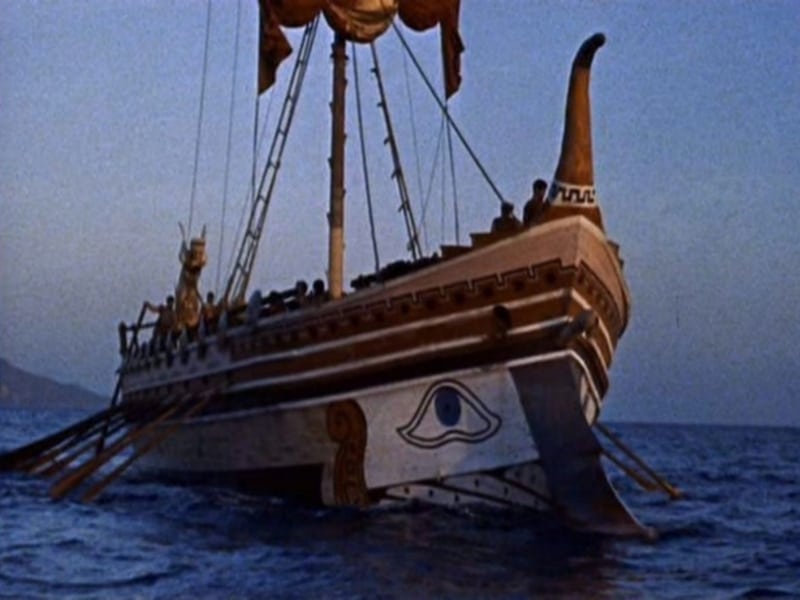
13. The Argo was built over a fishing boat and powered by three large Mercedes engines which cost roughly ten percent of the film’s budget. They sold the ship to 20th Century Fox after filming, and it was used in Cleopatra (1963).
14. Jackson loves movie props and replicas, and he acknowledges having more than a few illegal, non-licensed resin replicas of Harryhausen creations. He has more than a hundred Harryhausen figures, and some are limited editions available through certain sites and magazines “that shall remain nameless.”
15. Harryhausen credits the image of Talos’ head coming to life and turning towards Jason as being inspired by a Japanese film, but he was never able to recall the name of the movie.
16. The giant Talos puppet is actually roughly fourteen inches tall.
17. The liquid coming out of Talos’ foot is actually red cellophane animated by Harryhausen to look like flowing “blood.”
18. Harryhausen kept a couple of garages in Los Angeles, and one had been padlocked shut for decades. Cook was asked to help catalog and clear out the long-shuttered one in 2008, but while Harryhausen mentioned it was all junk what they found was anything but. Marionettes, puppets, creature pieces, and more from the artist’s youth and filmography were discovered within.
19. The production ran out of food at one point during filming and was left with only Corn Flakes and spaghetti. That’s technically food, but you get the point.
20. The garage expedition also revealed the dailies from many of Harryhausen’s older films, and that’s when Jackson got involved as he volunteered to clean up, restore, and save the footage. “That’s one of the advantages of owning a post-production facility,” he adds. Maybe he should use that facility to finally remaster and re-release definitive editions of Bad Taste (1987), Meet the Feebles (1989), and Dead Alive (1992)… just sayin’ Jackson!
21. Jackson recalls having a copy of Harryhausen’s book, The Film Fantasy Scrapbook — he didn’t own it, but he would borrow the library’s sole copy again and again for years meaning no one else was able to read it. “That’s why no one else in New Zealand became a stop-motion animator,” laughs Cook.
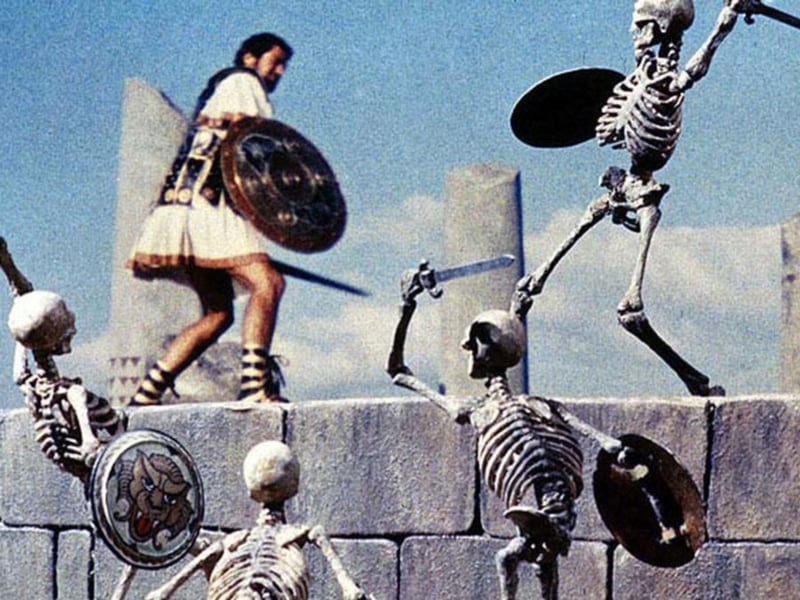
22. Harryhausen still had the seven skeletons (as of this recording which was done a decade before his death), but he doesn’t recall which of them was also used in The 7th Voyage of Sinbad (1958). He brought one to New Zealand, and Jackson and Cook made a too-short piece of stop-motion animation with it.
Best in Context-Free Commentary
“Neither Randy nor I were involved in the production of Jason and the Argonauts.”
“The camera can hide a lot of flaws if you’re whipping it around and panning and shaking it.”
“We kids waited a long time between Harryhausen pictures.”
“I remember watching this with tears being in my eyes when I saw it when I was young.”
Final Thoughts
Both Jackson and Cook are filmmakers long in love with the world of special effects, and their love for this film and the art itself runs throughout the movie. Jason and the Argonauts is a good time, and the star is absolutely the Harryhausen effects. The two offer plenty of anecdotes and information, and it’s a goldmine for fans and hopeful filmmakers in their own right looking to see how things were accomplished and why they’re worth being enthusiastic about. This is a great disc in an even greater box set, and it’s a highly recommended pick-up.
Read more Commentary Commentary from the archives.
